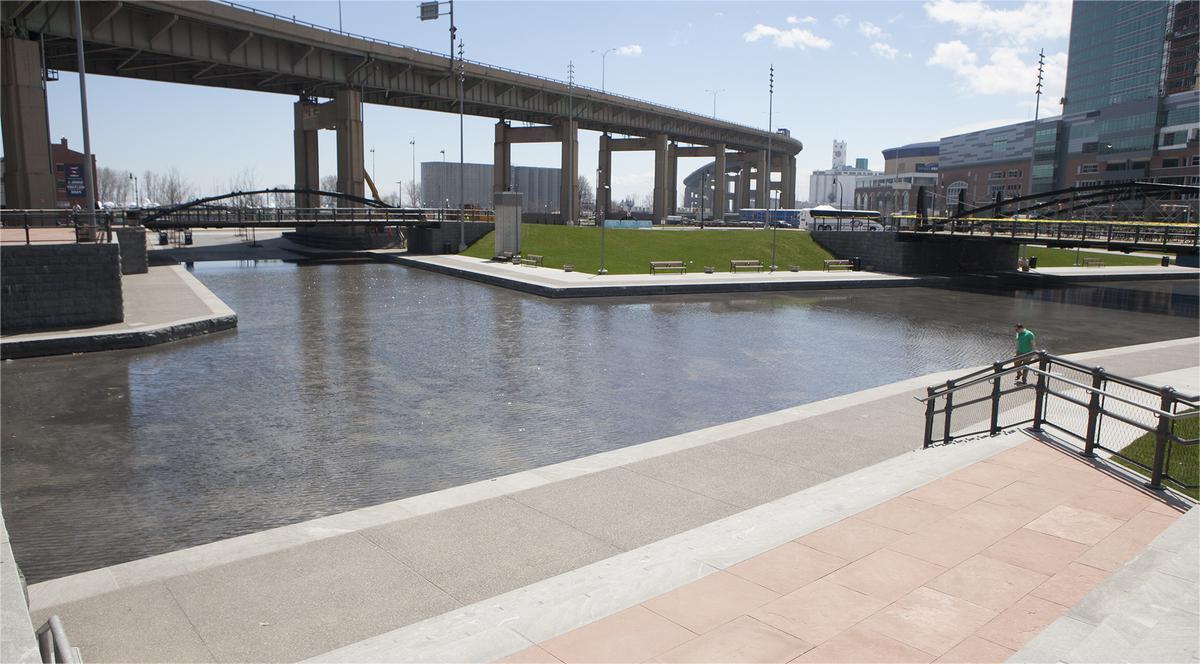Secrets Of Buffalo’s Historic Canal Basins

Have you ever wondered about the hidden gems in Buffalo, New York? One of the city's best-kept secrets is its historic canal basins. These canal basins played a crucial role in Buffalo's development during the 19th century. They were bustling hubs of activity, connecting the Great Lakes with the Atlantic Ocean through the Erie Canal. Today, they offer a fascinating glimpse into the past, with remnants of old docks, warehouses, and cobblestone streets. Walking through these areas feels like stepping back in time. Whether you're a history buff or just looking for a unique spot to explore, Buffalo's canal basins are a must-see.
Discovering Buffalo's Historic Canal Basins
Buffalo, New York, is a city rich in history, especially when it comes to its canal basins. These basins played a crucial role in the development of the city and the nation. Let's take a journey through some of the most significant canal basins in Buffalo.
1. Erie Canal Harbor
The Erie Canal Harbor is where it all began. This historic site marks the western terminus of the Erie Canal, which opened in 1825. The harbor was a bustling hub of activity, with boats arriving from and departing to various destinations.
- Location: Downtown Buffalo
- Highlights: Canalside, Naval & Military Park, Explore & More Children's Museum
2. Commercial Slip
Commercial Slip is a restored section of the original Erie Canal. It offers a glimpse into the past with its preserved stone walls and historic significance. This area was once a busy commercial hub where goods were loaded and unloaded.
- Location: Near Canalside
- Highlights: Historical markers, walking tours, scenic views
3. Central Wharf
Central Wharf was a key area for trade and commerce. It was here that many goods were transferred between canal boats and lake vessels. Today, it serves as a reminder of Buffalo's vibrant maritime history.
- Location: Adjacent to the Erie Canal Harbor
- Highlights: Boardwalk, public art, seasonal events
4. Black Rock Canal
The Black Rock Canal was constructed to bypass the treacherous Niagara River rapids. It provided a safer route for boats traveling between Lake Erie and the Niagara River. This canal played a vital role in the transportation of goods.
- Location: Along the Niagara River
- Highlights: Black Rock Lock, scenic bike paths, fishing spots
5. Buffalo River
The Buffalo River was an essential waterway for the city's industrial growth. It connected the Erie Canal to the Great Lakes, facilitating the movement of raw materials and finished products. The riverbanks were lined with factories and grain elevators.
- Location: South Buffalo
- Highlights: Riverwalk, kayaking, Silo City
6. Ohio Basin
Ohio Basin was a significant part of Buffalo's canal system. It served as a turning basin for boats navigating the city's waterways. The basin was a bustling area with warehouses and docks.
- Location: Near the Buffalo River
- Highlights: Historical significance, waterfront views, nearby parks
7. City Ship Canal
The City Ship Canal was constructed to provide a direct route for ships to access Buffalo's industrial areas. It played a crucial role in the city's economic development by facilitating the transportation of goods to and from factories.
- Location: South Buffalo
- Highlights: Industrial heritage, walking trails, birdwatching
8. Hamburg Canal
Hamburg Canal was another important part of Buffalo's canal network. It connected the Erie Canal to the Buffalo River, allowing for the efficient movement of goods. The canal was lined with warehouses and businesses.
- Location: Downtown Buffalo
- Highlights: Historical markers, scenic walks, nearby attractions
9. Hydraulic Canal
The Hydraulic Canal was built to provide water power to Buffalo's early industries. It was a vital part of the city's industrial infrastructure, supplying water to mills and factories. The canal's legacy can still be seen in the city's architecture.
- Location: Larkinville
- Highlights: Larkin Square, historic buildings, public art
10. Tonawanda Creek
Tonawanda Creek was an important waterway that connected the Erie Canal to the Niagara River. It played a crucial role in the transportation of goods and people. The creek's scenic beauty and historical significance make it a must-visit.
- Location: North of Buffalo
- Highlights: Scenic views, boating, fishing
Buffalo's historic canal basins offer a fascinating glimpse into the city's past. Each basin has its own unique story and significance, contributing to the rich tapestry of Buffalo's history.
Discover Buffalo's Hidden Gems
Buffalo's historic canal basins offer a unique glimpse into the city's rich past. Walking along these waterways, you can almost hear the echoes of bustling trade and industry that once thrived here. The Commercial Slip, Central Wharf, and Erie Basin Marina each tell their own story, showcasing the evolution of Buffalo from a key shipping hub to a vibrant modern city.
Exploring these areas isn't just about history; it's also about enjoying the present. Whether you're kayaking on the water, dining at a waterfront restaurant, or attending a summer festival, there's always something to do. These basins are more than just relics; they're living parts of Buffalo's community.
Next time you're in Buffalo, take some time to visit these historic spots. You'll gain a deeper appreciation for the city's heritage and its ongoing transformation.

